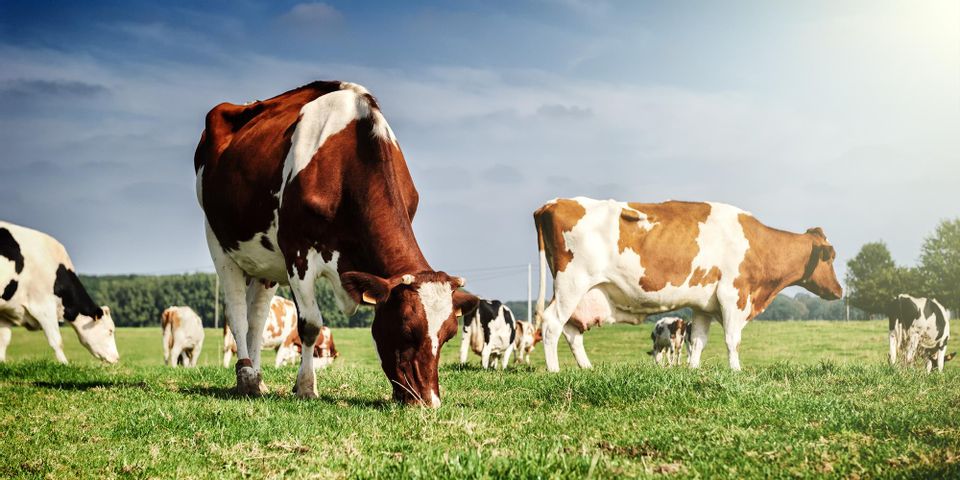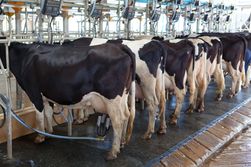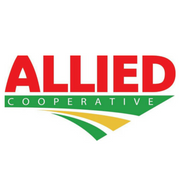What You Should Know About Heat Abatement in Dairy Cattle

Now that we’re in the hot months, paying attention to the temperature and humidity is very important when it comes to our animals. Heat stress can affect your cows in some very negative ways, including reduced milk production, reduced feed intake, rumen acidosis, and milk fat depression. The optimal indoor temperature for dairy cattle is 40–60 degrees, and cows have shown symptoms of heat stress at temperatures as low as 65 degrees. Counting respirations is one way to spot heat stress. Normal respiration for cows is 40–45 per minute with a normal body temperature of 101.5 degrees. Luckily, there are a few farming approaches we take to help keep our cows cool this summer, including areas of shade, air movement, and water.
How to Cool Your Dairy Cattle During the Summer
Shade
The most common way to cool is through shade. This can be from a barn roof, tree cover, or shade cloth. The area of improvement in the shade category that we see often is in free-stall barns; if cows are avoiding certain stalls in the morning or afternoon, watch the sun pattern. Cow comfort and stall utilization can be improved by installing shade cloth to block the sun from hitting the stalls.
Air Movement
Air movement is also important to keep cows cool. The velocity during periods of possible heat stress should be 4–6 mph, regardless of barn type. This can be achieved by placing fans over stalls and feed lanes as well as in holding areas.
 For existing fans, cleaning debris off the blades in the spring before they get turned on will help keep the velocity up to what the fan is rated for. It can also help keep the electric bill lower, as clean blades take less power to turn than heavy, dirty blades.
For existing fans, cleaning debris off the blades in the spring before they get turned on will help keep the velocity up to what the fan is rated for. It can also help keep the electric bill lower, as clean blades take less power to turn than heavy, dirty blades.
Water
Drinking water requirements increase with the ambient temperature, so making sure adequate water space is provided to all cattle is extremely important. The most common dairy farming recommendation for water space is 4 inches per cow and at least two watering areas per group. A cow will drink up to 10% of her daily intake immediately after milking if water is available, so providing it along exit lanes of the parlor is significant.
The other facet of water when it comes to heat stress is evaporative cooling. The cow’s main sweat glands are around the nose and udder, so by applying water to the back of the cow—along with airflow to help with evaporation—you can cool her body temperature down significantly.
Other Considerations
Lactating cows are not the only group in need of cooling, as dry cows are also extremely important. There have been studies done that show cows cooled during the dry period will have a higher milk yield in the coming lactation, produce heavier calves, and have a higher dry matter intake at calving than those not provided with cooling.
Since 1918, Allied Cooperative has been committed to helping mid-Wisconsin farmers thrive. Locally owned by their members, the co-op uses the joined forces of the community to increase your buying power, negotiate better rates, and share best practices for sustainable farming. If you have any questions on how to implement cooling systems at your farm, contact a representative at (800) 247-5679 today. Visit the website to learn more about the team.
About the Business
Have a question? Ask the experts!
Send your question

